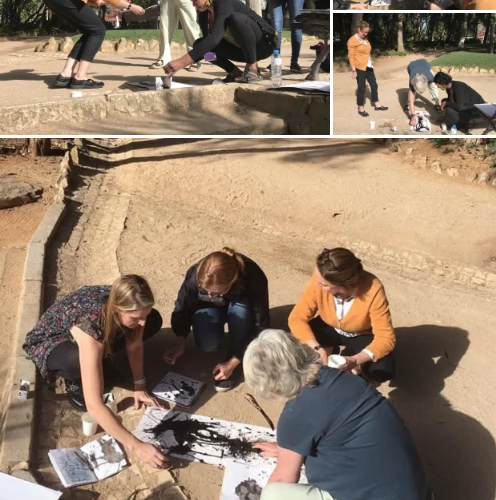
Study event review: Lisbon 2020.
OCA Student Alison Dollery shares her account of the recent study event in Lisbon.
Scratching, Collaborations, Exhibitions, Getting lost, Paula Rego and Sexy Toilets.
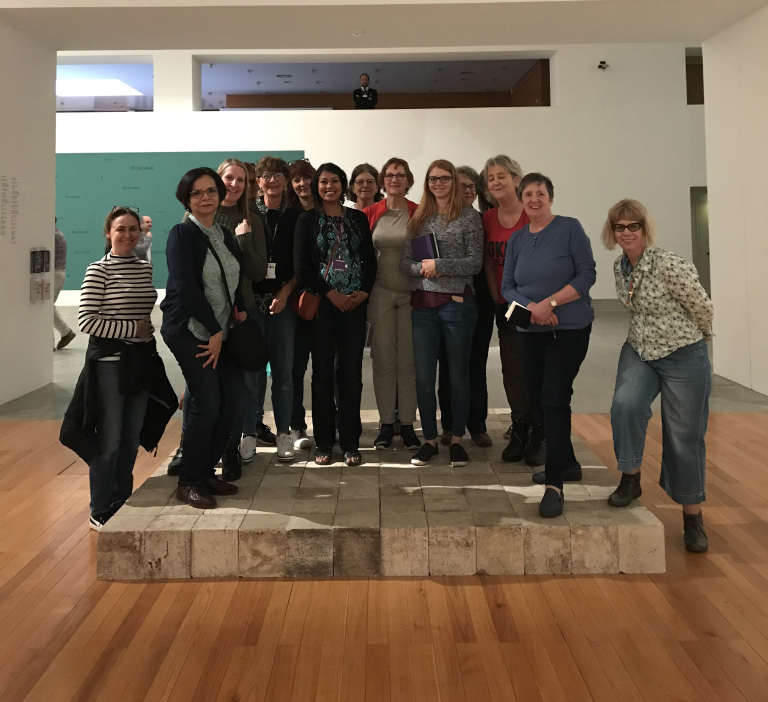
Having been a student with the OCA now for four years I have attended many student study visits. When the news came of a study visit in Lisbon alongside my current tutor Diana Ali there was no doubt that the trip would be beneficial. Especially considering how inspiring Diana’s own work has been on my practice.
I was apprehensive before travel it was daunting not knowing anyone on the trip. The OCA set up a Padlet group to allow for fluid conversation to start between students and allowed us to merge travel arrangements. This quickly put concerns at ease and the realisations that I would be getting the privilege to be around like-minded artistic students from all different degree pathways and study levels.
Arriving
The flight path into Lisbon mirrors the river Tagus and the light becomes immediately apparent, flooding upon you as you enter this heterogeneous place, it’s completely inspiring.
Day 1 consisted of a morning coastal walk followed by travelling by train into Lisbon, sketching and an afternoon visit to the Museu Colecao Berardo.
Museu Colecao Berardo
Jorge Catarino gave an extremely informative talk about the museum’s permanent collection featuring art from 1900 to the present day. This talk plugged learning gaps for me around the context of abstract art, surrealism especially in relation from Portugal’s perspective and a deeper social, political context generally.
This exhibition was extremely relevant for my current course Studio Practice and gave a contrast to the recently visited Tate’s Studio Practice Exhibition. Seeing Ana Mendieta’s Untitled/Bloodsign/body tracks 1974 video performance using of abject substances in a gallery has been on my wish list for a while.
I was immediately struck by the glass installation by Larry Bell. Bell’s installation is then shown in Jemima Stelhini Video Performance and photographic stills (2005) alongside artist Lewis Amar. The video exemplifies working in a feminine context, and the realisation that Jemima Stelhini is self photographing using a cord in her mouth, whilst Lewis Amar handles her naked body within the glass installation. The museum plaque explains ” the construction of gesture, of action, proposes a non-linear narrative in a series of meanings that maintain the dialogue between the architecture of the body and architecture of space”…. “the body is neither full nor empty.. neither inside or outside” (Museu Colecao Berardo).
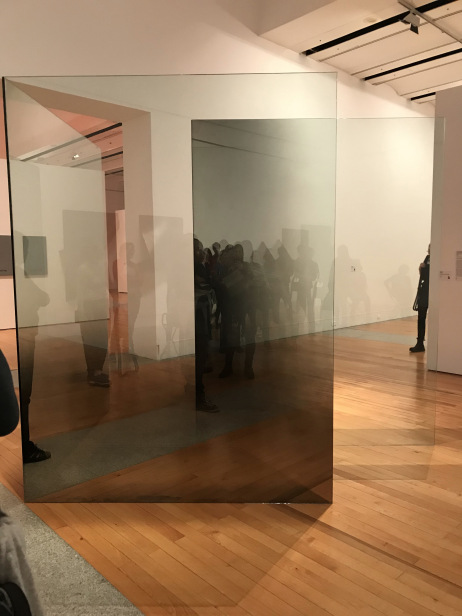
The tutors challenged our thoughts around how the exhibition was curated comparatively to other galleries. As a further contrast, seeing how the temporary exhibition of artist Joana Escoval’s Mutações. The Last Poet questions associations “with the relationships between substances, the body, and the world is explored through the metaphors produced by these devices” (Museu Colec Berardo) juxtaposed between curved winding white walls that pulls you into the exhibit.
Day 2
Barreiro/PADA/Alfama
After visiting a public bathroom titled the Sexiest WC in the world, a small exhibition and actual public bathroom challenging the concept of a bathroom, we took a beautiful ferry ride, to visit Barreiro, PADA residency and the no go zone. Cofounder Tim Rolston gave us an insight into working practices, with Michelle Whiting adding her thoughts on her experience as an artist in residence there.
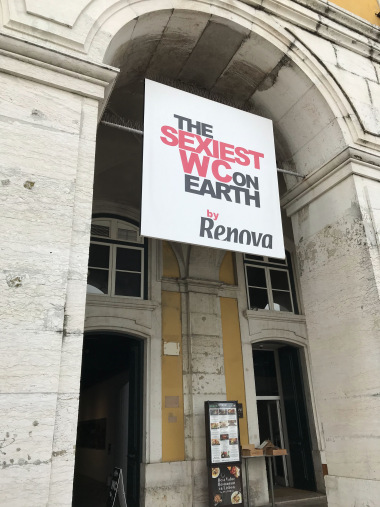
I responded to the industrial No Go Zone by taking rubbings of the skin of the concrete tower using a Yves Klein Blue. Inspired by the previous day’s performance work. How does the body relate to space and place? Is there a performative landscape? Against dominant structures?
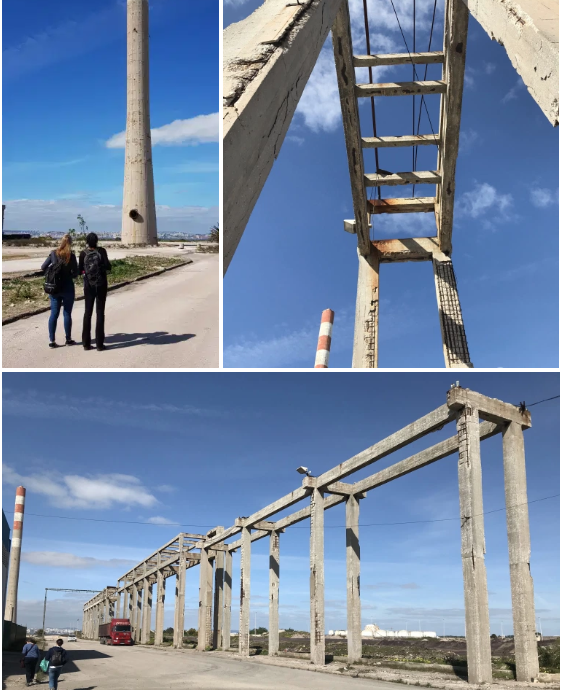
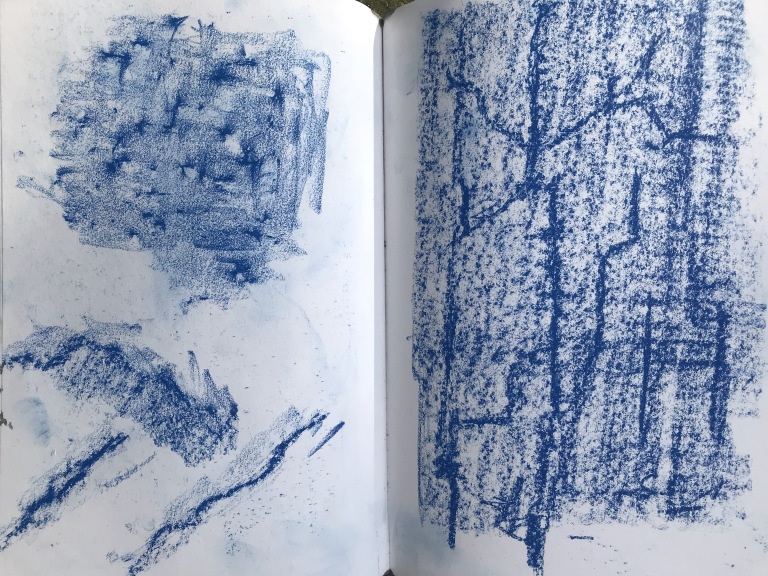
The afternoon was spent getting lost, in a labyrinth walking around the district of Alfama’s cobbled and narrow streets, the oldest neighbourhood of Lisbon where gaps in buildings allowed for magnificent views to sketch, stop and reflect. It was so interesting to learn how walking, getting lost physically and mentally are integral to Diana’s and Michelle’s artistic practice. It’s great to really reflect on all the different things we do as people that become rituals within our artistic practice.
Day 3
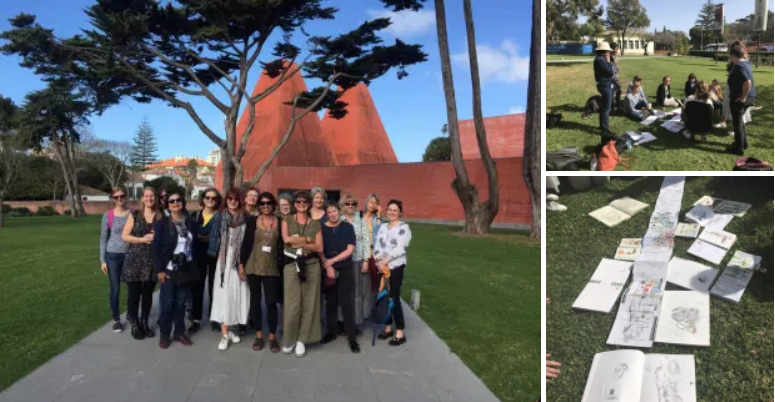
Visiting Casa Das Historias, Paula Rego’s Museum, Michelle Whiting explained the significance of a museum completely dedicated to a female artist. The architecture of the building is monumental. Previously I had not related to Rego’s work, as the visual readings can be complex and did a huge amount of pre-trip research to maximise learning. It’s a language that once understood takes you into Rego’s world, like a wonderland. Getting to see her preliminary sketches, drawing technique and the processes of how she builds these narratives especially in relation to her own life story gave deep insight.
These images are pertinent in understanding the logic in the use of Rego’s mark and tone, using ink and pencil. Sometimes the line acts as an anchor with the rest of the drawing building around it.Rego’s use of tracing paper layered with figures exemplifies how she plays and builds her larger compositions alongside using grids to work out proportions.
“All scratching is important. The pressure, the scratching, which also has to do with wounding. All of the work, from the beginning, involves drawing, more than painting. The line that is traced has to mean something” (Rego).
I have become confident at line drawings of the human form but taking me completely out of my comfort zone to build on drawing the human form using tone and shape and building these figures using Rego’s technique has really changed my thinking about how important each mark I make becomes in the narrative of my bodily drawings.
In the afternoon Diana Ali led a group of us to explore expressive mark-making in the park in Cascais mixing dirt and ink, using our hands, leaves, twigs whilst collaborating on work as a group of students. This was so important for me to collaborate and work together in an outside space.
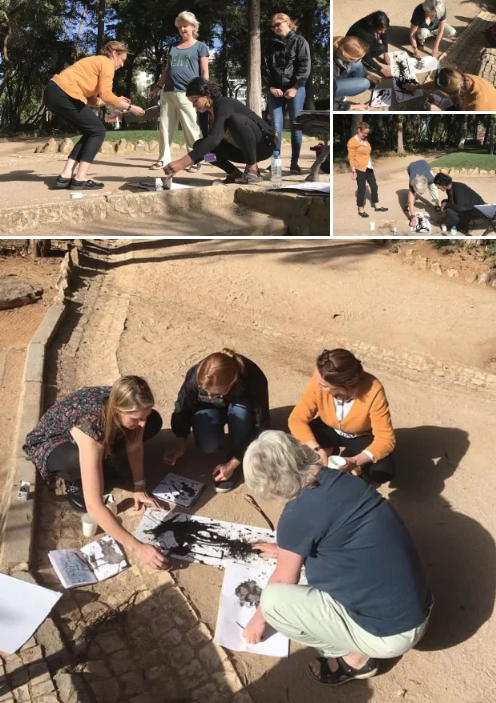
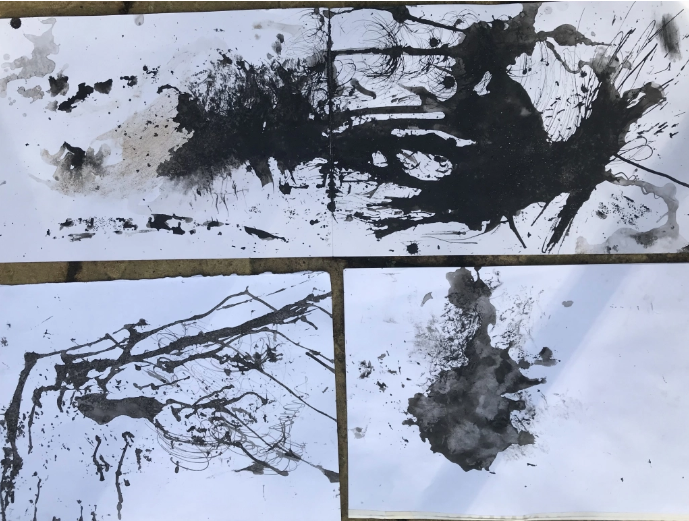
Finally ending on the beach, experimenting soaking paper in the sea, Michelle Whiting found some earthy reddish pigment that we used and discussed the materiality of using the place within our materials and subsequent mark-making.
This blog post is just a summary of highlights that really stood out for me from an extremely informative trip. It can be challenging being a distance learning student but this trip allowed for complete fluidity in conversation over a period of time to really learn and reflect from each other as students.
Thank you to all the students on this trip, a genuinely brilliant group of like-minded creatives but mostly to Diana Ali and Michelle Whiting for the time spent arranging, preparing, researching this trip and being so generous with your knowledge and extremely insightful into your own practices.
See more images and insights from the trip on Alison’s blog here.
|
|




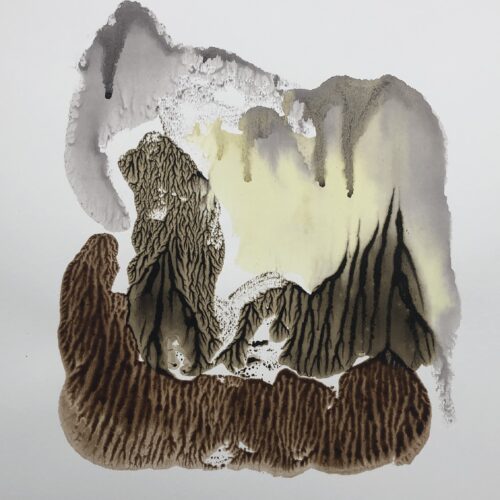

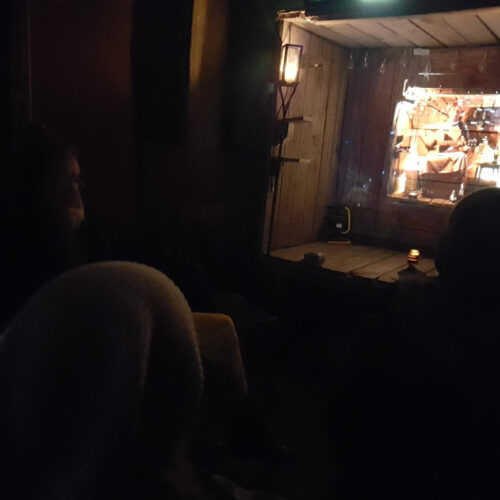
Sounds that a fantastic event happened in a wonderful place. Thanks for writing it all up and for sharing your experience with us. I do wonder about diversity culture, though 😉
Thanks Stefan. It was fantastic and hopefully more trips like this to wonderful places will be running again soon.
Hi Stefan – could you elaborate on your wonderings re diversity and culture? I could not see the relevance to Alison’s post and I am intrigued